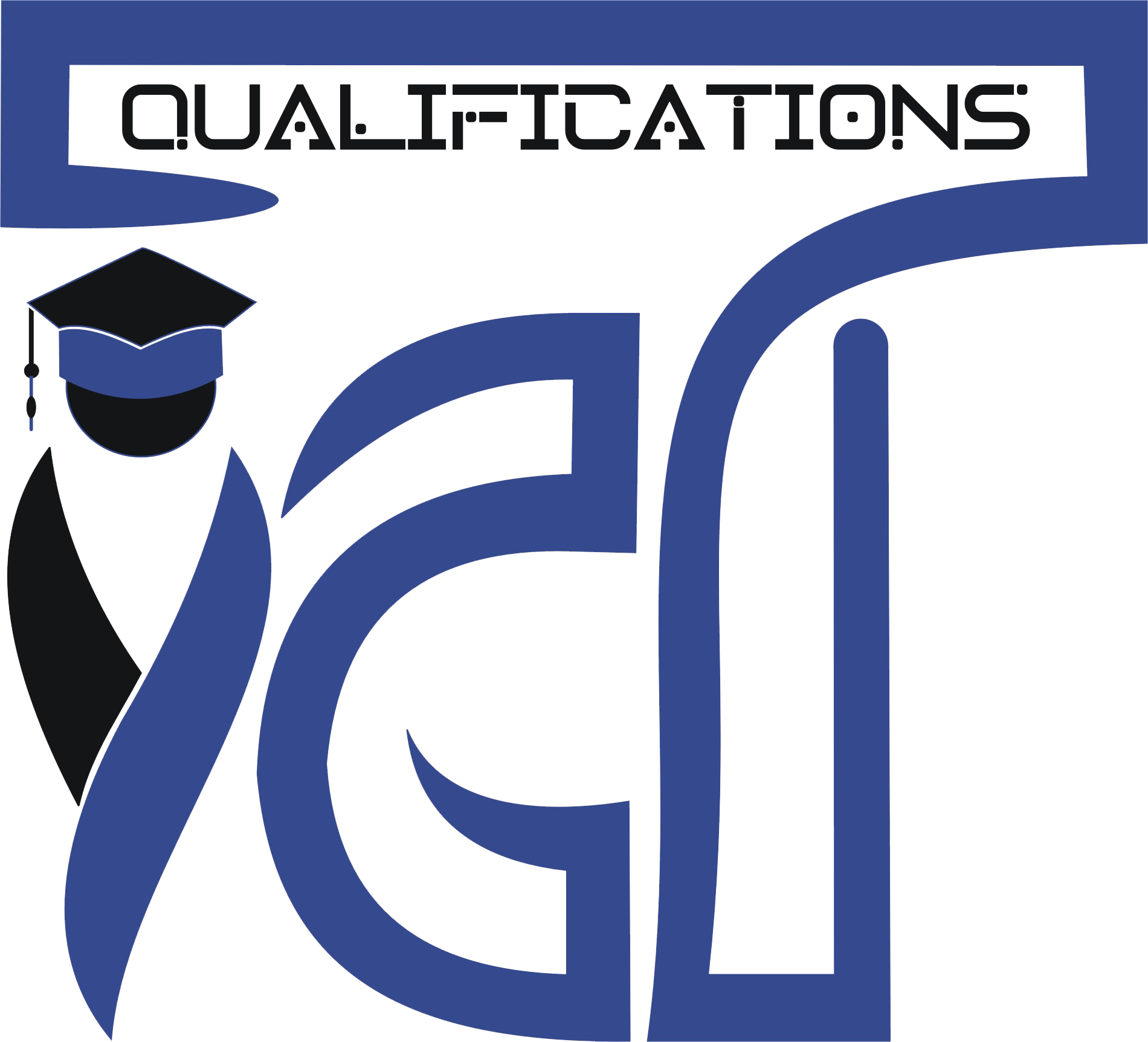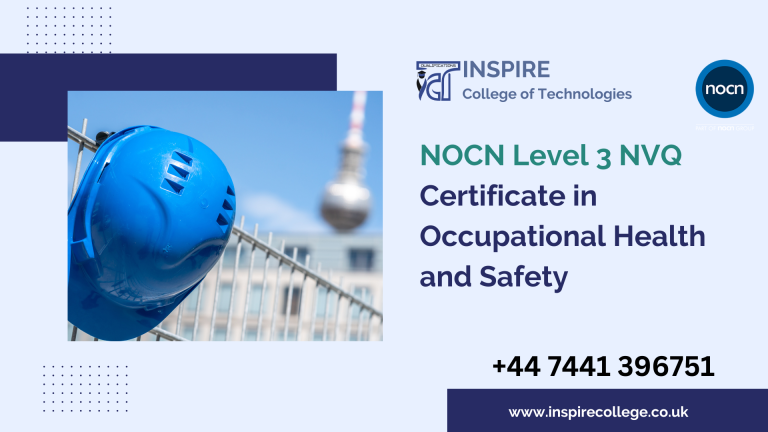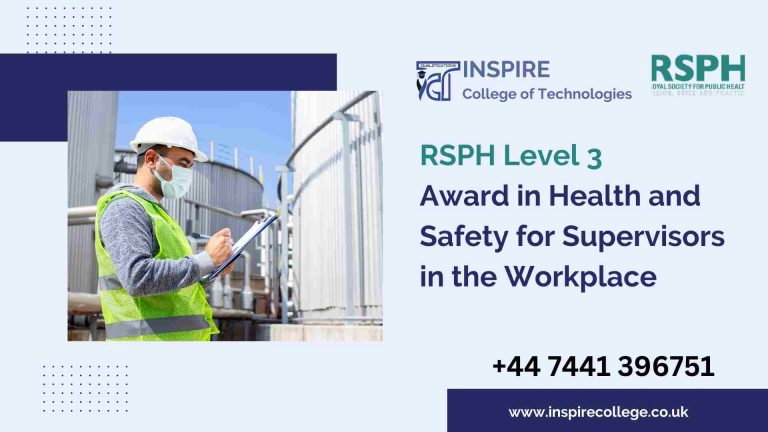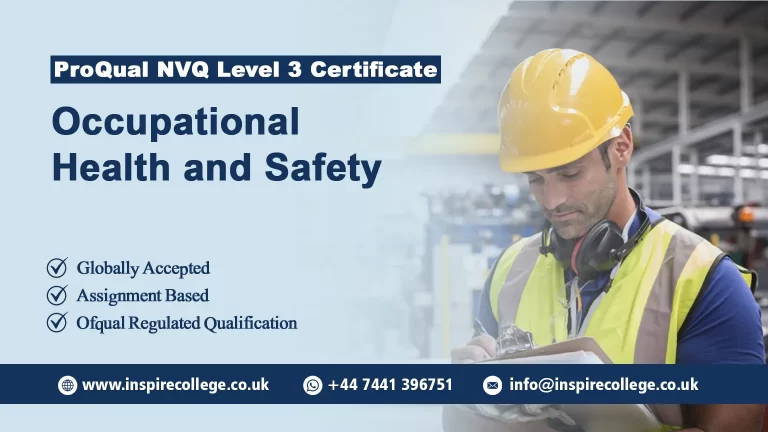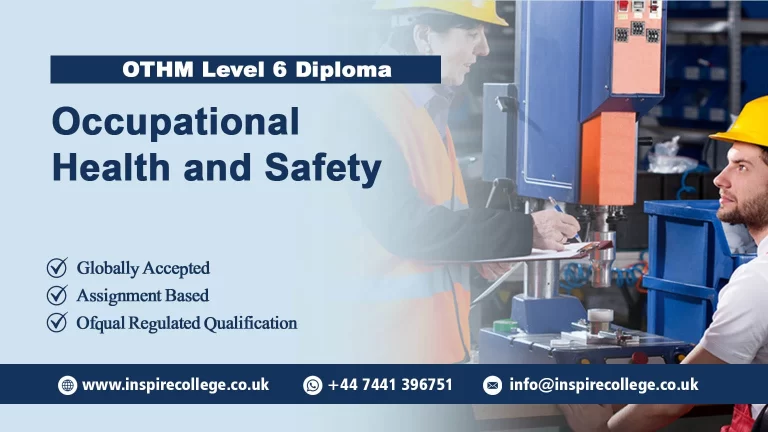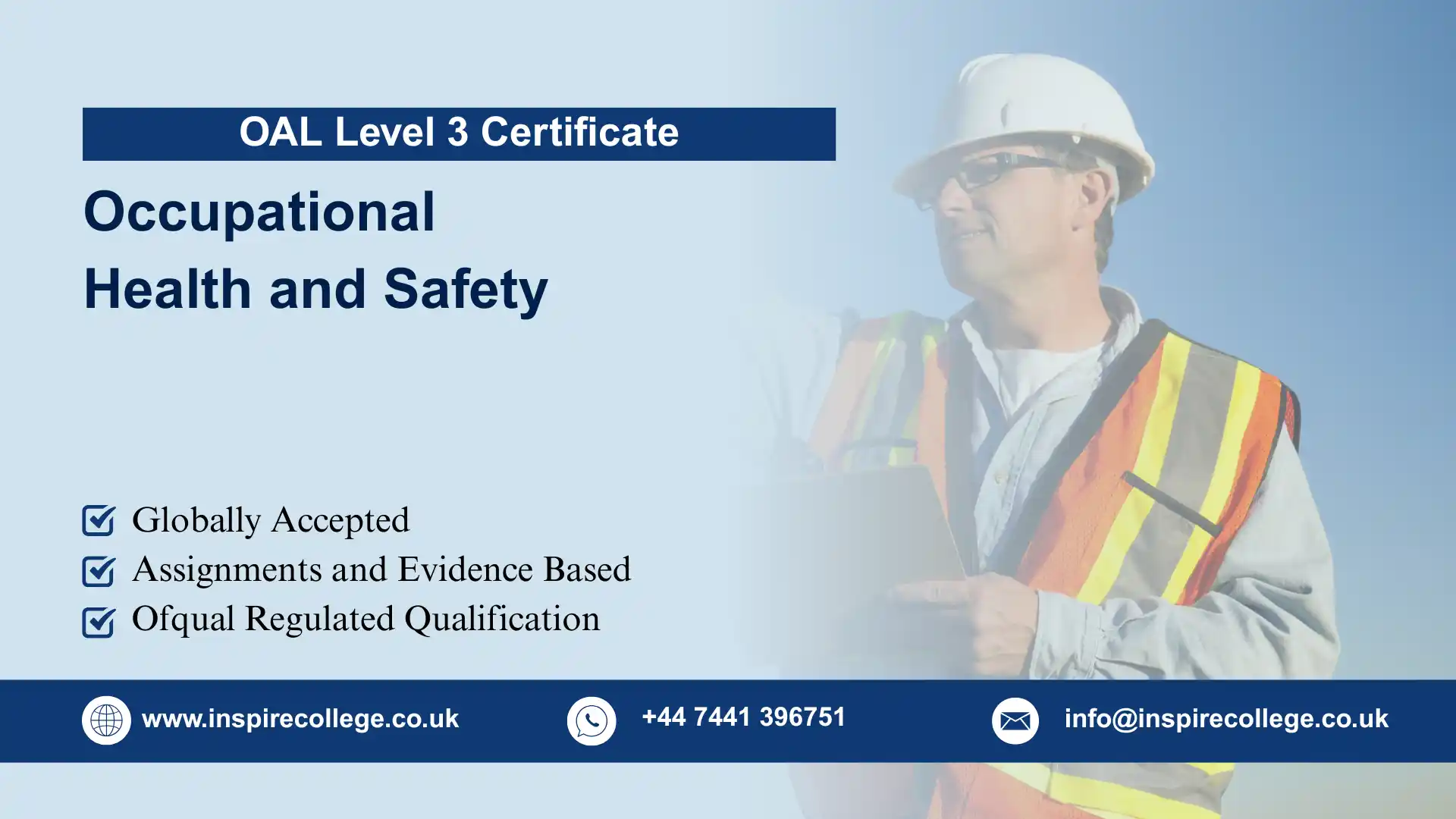
OAL Level 3 Certificate in Occupational Health and Safety
The OAL Level 3 Certificate in Occupational Health and Safety is a nationally recognised qualification designed for individuals who are responsible for, or contribute to, maintaining health and safety in the workplace. It provides learners with the foundational knowledge and practical skills required to support safe working environments, promote a positive safety culture, and ensure compliance with health and safety legislation and organisational policies.
This qualification is ideal for those working in roles such as Health and Safety Representatives, Supervisors, Team Leaders, or anyone involved in day-to-day safety practices and risk management within their organisation. It serves as a solid platform for those looking to advance into more senior safety roles or progress toward higher-level health and safety qualifications.
The OAL Level 3 Certificate in Occupational Health and Safety equips learners with the essential competencies required to understand and manage health and safety responsibilities in a variety of work environments.
This competency-based qualification is assessed through the creation of a portfolio of evidence, work-based tasks, observations, and written assignments. It aligns with UK regulatory standards and is suitable for a wide range of industries, including construction, manufacturing, logistics, education, healthcare, and public services.
Successful completion of this qualification enhances learners’ ability to contribute to effective health and safety management and provides a pathway to further professional development, such as the OAL Level 4 or Level 6 Diploma in Occupational Health and Safety Management.
While there are no formal academic entry requirements for this qualification, learners must meet the following criteria to ensure successful participation and achievement:
- Minimum Age Requirement: Learners must be 16 years of age or older at the time of registration. OAL does not accept registrations for learners under the age of 16.
- Educational Background: A basic level of secondary education (equivalent to Level 2 or GCSEs) is recommended to support comprehension of the course material.
- Workplace Experience: Learners must be currently employed in a role related to occupational health and safety, or have regular access to a real work environment where health and safety practices can be demonstrated and assessed.
- English Language Proficiency: Learners must have a sufficient level of English language skills (both written and verbal) to understand course content, participate in discussions, and complete written assignments and assessments. This is typically equivalent to CEFR Level B1 or above.
- Potential and Opportunity to Achieve: Centres must ensure that all learners have the ability, commitment, and opportunity to meet the requirements of the qualification in their workplace setting.
The OAL Level 3 Certificate in Occupational Health and Safety qualification consists of 7 mandatory units of 34 credits , 335 Total Qualification Time (TQT) and 174 Guided Learning Hours (GLH).
Mandatory Units
| Sr# | Unit Title | Level | Credit | GLH |
|---|---|---|---|---|
| 1 | Manage own actions to reduce risks to health and safety | 3 | 5 | 15 |
| 2 | Developing procedures to safely control work operations | 3 | 5 | 26 |
| 3 | Monitor procedures to safely control work operations | 3 | 5 | 35 |
| 4 | Promote a positive health and safety culture | 3 | 4 | 18 |
| 5 | Conduct a health and safety risk assessment of a workplace | 3 | 6 | 32 |
| 6 | Investigate and evaluate health and safety incidents and complaints at work | 3 | 5 | 32 |
| 7 | Supervise the health, safety and welfare of a learner in the workplace | 3 | 4 | 22 |
Learning outcomes for OAL Level 3 Certificate in Occupational Health and Safety
1. Manage Own Actions to Reduce Risks to Health and Safety
Learning Outcomes:
- Understand personal responsibilities under health and safety legislation.
- Identify hazards and assess risks in the working environment.
- Demonstrate safe working practices to minimize risk to self and others.
- Follow workplace procedures and use appropriate PPE correctly.
- Report incidents, near misses, and unsafe conditions in line with organizational policies.
2. Developing Procedures to Safely Control Work Operations
Learning Outcomes:
- Understand the importance of procedures in maintaining health and safety.
- Identify legal and organizational requirements for developing safe systems of work.
- Develop clear, practical procedures to control specific work operations.
- Consult relevant personnel during the development of procedures.
- Ensure procedures are communicated effectively and reviewed regularly.
3. Monitor Procedures to Safely Control Work Operations
Learning Outcomes:
- Understand the purpose of monitoring health and safety procedures.
- Use appropriate methods to monitor compliance with procedures.
- Identify and address non-compliance and unsafe practices.
- Maintain accurate records of health and safety monitoring activities.
- Recommend improvements to existing procedures based on monitoring results.
4. Promote a Positive Health and Safety Culture
Learning Outcomes:
- Understand the characteristics of a positive health and safety culture.
- Identify the benefits of employee involvement in safety practices.
- Apply strategies to encourage safe behavior and discourage risk-taking.
- Communicate health and safety expectations clearly and positively.
- Lead by example to influence others in adopting safe working practices.
5. Conduct a Health and Safety Risk Assessment of a Workplace
Learning Outcomes:
- Understand the legal requirements for risk assessment.
- Identify hazards and those who may be affected.
- Evaluate the level of risk and determine appropriate control measures.
- Record findings in a structured risk assessment format.
- Review and revise risk assessments in response to changes or incidents.
6. Investigate and Evaluate Health and Safety Incidents and Complaints at Work
Learning Outcomes:
- Understand the importance of investigating health and safety incidents.
- Gather information using structured investigation methods (e.g., interviews, site inspections).
- Identify root causes and contributing factors of incidents and complaints.
- Produce clear, evidence-based investigation reports.
- Recommend corrective and preventive actions based on investigation findings.
7. Supervise the Health, Safety and Welfare of a Learner in the Workplace
Learning Outcomes:
- Understand the responsibilities of supervisors toward learners and trainees.
- Identify potential risks specific to inexperienced workers.
- Provide effective health and safety induction and on-the-job training.
- Monitor the learner’s compliance with health and safety procedures.
- Support the learner’s development of safe working practices and awareness.
The OAL Level 3 Certificate in Occupational Health and Safety is designed for individuals who are actively involved in supporting or managing health and safety practices within the workplace. It is ideal for those who want to develop their knowledge, skills, and competence in promoting a safe working environment and ensuring compliance with relevant health and safety legislation.
This course is particularly suitable for:
- Health and Safety Representatives seeking formal recognition of their skills
- Supervisors and Team Leaders with responsibility for maintaining safe working practices
- Employees involved in workplace inspections, risk assessments, or incident reporting
- Individuals looking to start or advance a career in occupational health and safety
- Workers in high-risk sectors such as construction, manufacturing, logistics, healthcare, or facilities management
Whether you are new to the field or looking to build upon existing responsibilities, this qualification provides a strong foundation for further progression into senior health and safety roles or higher-level qualifications such as the OAL Level 4 or Level 6 Diploma in Occupational Health and Safety Management.
Register Now
FAQs for OAL Level 3 Certificate in Occupational Health and Safety
